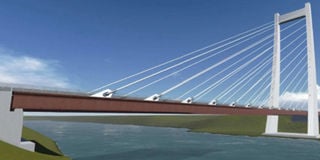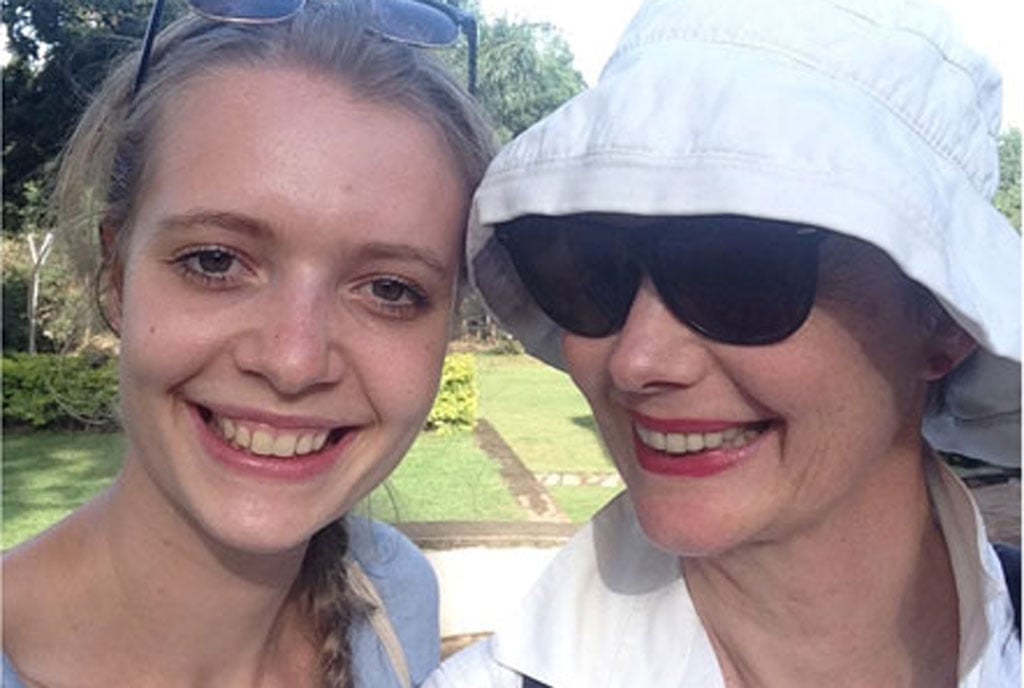Prime
Works on new Karuma bridge stall as negotiations drag on

An artistic impression of the proposed new Karuma bridge. The construction of the bridge has stalled due to the ongoing negotiations between the government and JICA. PHOTO/FILE
The construction of the new Karuma bridge will only kick off once the ongoing negotiations between the government and the Japan International Cooperation Agency (JICA) are finalised, Daily Monitor has learnt.
Last year, the government unveiled a detailed plan to construct a new Karuma bridge, about 500 metres downstream from the existing one.
The move was intended to save the current old bridge which is said to be low lying and scary for passengers.
On Tuesday, the Uganda National Roads Authority (UNRA) revealed that the commencement of the construction of the bridge had been delayed by the ongoing negotiations between government and JICA.
“We are looking at having a cable bridge with the new one but we are still negotiating with JICA who are the potential financers, having worked with them on the Nile Bridge in Jinja District,” Mr Allan Ssempebwa, the UNRA spokesperson, said in an interview.
An August 2018 Feasibility and Preliminary Design Study Report on the new bridge indicates that the bridge will sit over the river where the width of the crossing area is approximately 130 metres, almost double that of the current bridge which is at 70 metres with a length of approximately 200 metres.
The detailed design of the new Karuma bridge was completed by AIC Progetti in association with Prome Consultants Ltd in July 2017 and estimated to cost Shs256 billion ($69 million).
The design report also indicates that the cross-section of the new bridge will comprise four vehicle lanes with a walkway on both sides and an overall width of 20.75 metres.
Scary bridge
There have been public concerns recently of a possible submersion of the bridge after heavy rains in the area caused the water levels to rise and nearly touch the bridge’s beam.
Mr William Amanzuru, an environmental activist, predicts that the bridge could soon become a disaster if plans to build the new one do not materialise quickly.
“The climate is changing so rapidly and shockingly and the bridge may one day be submerged as it happened at Pakwach Bridge,” Mr Amanzuru said.
Mr Emmanuel Ojara, a resident and businessman in Gulu Town, said crossing the bridge offers a mixed feeling of thrill and dreadfulness.
“This year, the water levels have risen so much and it has made the whole environment terrifying because you are not sure whether you will reach the other side successfully,” he said.
UNRA reacts
However, UNRA says its technical teams are carrying out frequent monitoring and assessment of the bridge to avoid a disaster.
“Our teams have been adequately monitoring that area throughout the year in case of any damages because of the heavy rain but luckily it did not reach that extent of washing away the bridge,” Mr Ssempebwa said.
However, documents relating to the state of the old bridge, including the environmental impact assessment for the new bridge, indicates that the old bridge is already developing cracks with water leakages on the bridge’s base beams.
Another issue is the unfavorable road geometrics at the bridge which have caused many accidents, according to UNRA.
Approach roads to the existing Karuma bridge on both sides have a sharp curve with a very steep slope and its road width not being sufficient.
According to UNRA, on July 7, 2017, the driver of a truck loaded with livestock, poultry, and nine passengers, lost control at the bridge and plunged into the river.
Marine police could only recover three dead bodies and six dead cows.
However, the cause of the frequent accidents at the bridge has remained a mystery due to several theories that have always been advanced including the existence of evil spirits.
Karuma bridge was constructed shortly after Uganda’s first independence anniversary in 1963, the current Karuma bridge was meant to connect the districts West Nile, Gulu, and Lira in order to help farmers ferry their cotton to Nyanza Textile Mills in Jinja District via Kampala, for processing.
At the moment, it links Lango, Acholi, West Nile, and South Sudan to Kampala and the rest of the country.
Before the bridge was built, people crossed over to either side using a makeshift bridge made of tree logs that was very slippery as water kept on splashing on it.
As a result, many travellers were forced to use boats via Lake Kyoga, which was miles away from Karuma.




